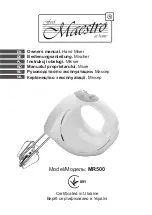
3.8 Channel Patch Points
3.8.1 Complete Channel Patch Points
There is a comprehensive set of Patch Points associated with the complete Vision channel
including:
•
Microphone Tie Lines
•
Upper 200 Slots
•
Lower 200 Slots
•
500 Slot
•
1068L Input module (Fader 1 and Fader 2 audio path)
•
Multitrack Recorder Returns
The following section outlines these Patch Points in the order they appear in the Patch Bay.
The Patch Points for the Fader 1 and Fader 2 audio paths are outlined later in this section.
IMPORTANT NOTE: To accommodate the space restrictions of this manual, only the first
eight (8) Patch Points are shown for each row. The total number of
these points in an actual patch bay will is determined by frame size.
For example, a 48 channel frame will have 48 Patch Points for each
of sections outlined below.
Normals
Outputs: All output Patch Points “split” when a patch cord is inserted. In other words, the
signal continues to its Normalled destination, as well as through the inserted patch cord, in
essence creating a “Y-cord.”
NOTE: The MIC TIE LINE OUT Patch Points are the only Patch Points that “break” when
a patch cord is inserted.
Inputs: All input Patch Points “break” when a patch cord is inserted. In other words, the
signal is diverted through the inserted patch cord and does not continue on to its normalled
destination.
MIC TIE LINE OUT: Studio Microphone Tie-line
Outputs
•
Fully-normalled to MIC PREAMP IN
MIC PREAMP IN: Connection point to the Preamp
Input (Upper 200 Slot or Options Bucket In)
•
Feeds the preamp input
•
Fully-normalled from MIC TIE LINE OUT
•
Patching to these points will replace the mic
tie-line feed to the preamp with the patch
cord signal
•
Not used with 205L Direct Input Module
PEAK: A red LED illuminates when the preset Peak Reference level is reached
in the audio path
PEAK REFERENCE: Sets the Peak Reference level for the channel Peak
Indicators
•
+4 dBu to +24 dBu Range
•
2 dB increments
















































